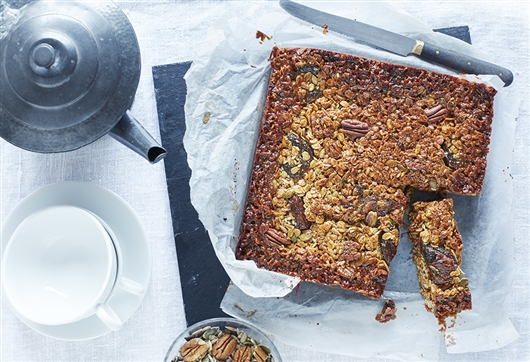Having spent a decade in and out of hospitals when I was younger, I know first-hand how hospital food can sometimes leave a lot to be desired. When you're going for cancer treatment it can feel particularly disappointing, because this of all times is when you need food to be nourishing and appetizing. There are exceptions, of course, with some hospitals making a real effort to improve the quality of meals they provide. But I often advise my patients not to leave their eating to chance, and instead to pack their own supplies, especially if they're just attending for day treatments.
It can feel empowering to take control of your own food and comforting to have a few of your favourites with you. You could start with drinks - some herbal tea bags, sprigs of fresh mint, or a pot with a few slices of stomach-soothing fresh ginger or lemongrass (which you can find in the supermarket herb section). Take them in a lunch cool bag to help keep them fresh. As long as the staff are happy, you could even take your own mug or thermal cup, so then you'd just need some hot water to make a calming herbal tea. It can be much nicer to drink out of a china mug rather than a paper or plastic cup.
I recommend taking some dried fruit to nibble on when you need an energy boost (although you may want to avoid dried apricots, as I find they cause bloating in some of my patients). Dates, soft dried figs and dried apple rings are great. Apple is one of the most settling fruits you can eat and it's useful if you tend to feel nauseous during your treatment. Chew a dried apple ring or take in a small pot of stewed apple and eat a few spoonfuls. Small sips of a cool apple juice or sparkling apple drink can also help to quell a queasy stomach. Cereal bars, whether shop-bought or homemade, that travel well and are packed with nuts, seeds, fruit and oats for energy, are another great option.
Cold sandwiches can seem unappealing, so you might try taking in a wide-topped flask filled with warming, fresh soup - a light broth if that's all you can manage, or a more substantial soup full of nourishing goodness (I love leek and potato at this time of year). When you need extra sustenance, you could go for a colourful, vegetable-packed ratatouille, or a classic Italian bean soup, with a slice of fresh bread. You might find that a soft white sourdough bread is easier to digest than a wholegrain loaf. Bread freezes well, so you could slice up a loaf and freeze individual portions as soon as you buy it, which can reduce food waste and help your budget, too.
How to make homemade dried apple slices
I love to make these at home as a snack for myself and my daughter.
Wash and core three or four apples. Slice them thinly and dip them in a bowl of water with a few drops of lemon juice, to stop the apple browning. Pat the apple slices dry, sprinkle with cinnamon (optional) and arrange on wire baking racks in the oven. Set your oven to the lowest temperature, around 150C/300F/gas mark 2, prop open the oven door to allow moisture to escape, and dry for 5-8 hours. The apple slices will feel dry and spongy when ready. The apple slices can be stored in an airtight container for several weeks.
Please note: wash all food well and keep it chilled until eating to reduce risk of food poisoning. If you are neutropenic, talk to your hospital team about bringing in food from home to eat at hospital.
Join our Online Community to talk to other people affected by cancer
Read more on our Community News Blog
Keep up-to-date with the blog, Nourish - eating well with cancer
Whatever cancer throws your way, we’re right there with you.
We’re here to provide physical, financial and emotional support.
© Macmillan Cancer Support 2024 © Macmillan Cancer Support, registered charity in England and Wales (261017), Scotland (SC039907) and the Isle of Man (604). Also operating in Northern Ireland. A company limited by guarantee, registered in England and Wales company number 2400969. Isle of Man company number 4694F. Registered office: 89 Albert Embankment, London SE1 7UQ. VAT no: 668265007